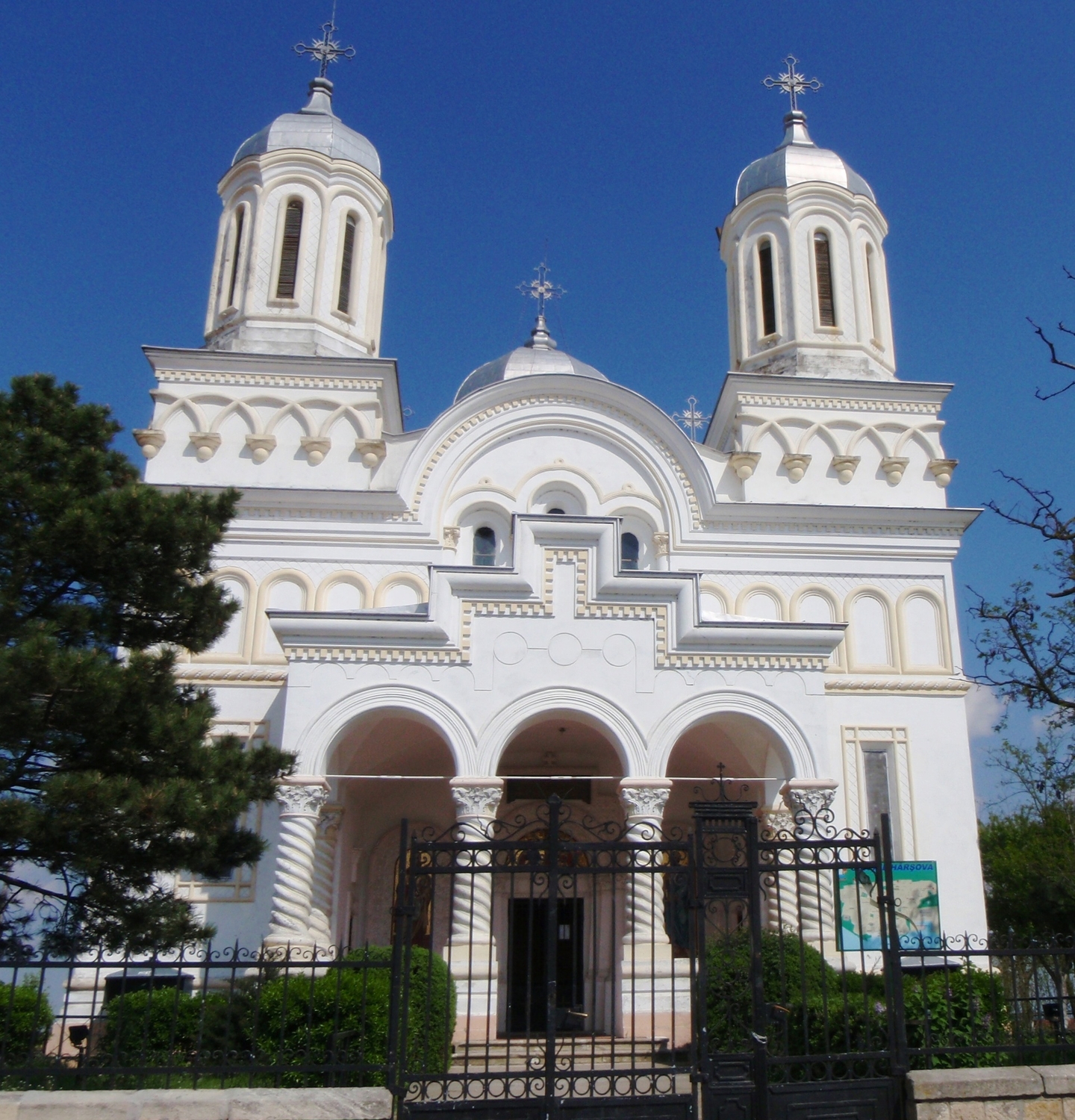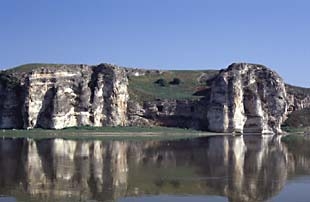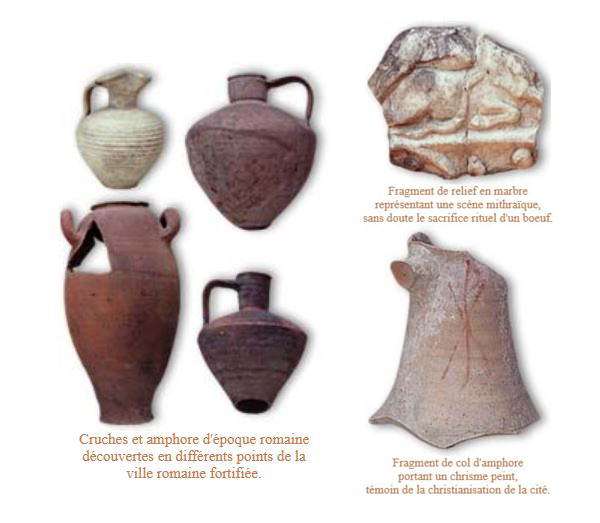- Home
- Time and place
- Hârsova
- Archaeological Regions
- The Roman-Byzantine City of Carsium
The Carsium Fortress viewed from the Danube, which occupies the entire summit of the hill. At its center is the wall of the medieval harbor complex.
Its history is intimately linked to the Roman history of the lower Danube yet undoubtedly began earlier with the Gete era.
The name Carsium is a toponym of Thrace origin, which appeared in documented Roman sources (Ptolemy, Peutinger's maps, The Antonin Itinerary, The Register of Offices of the later Roman Empire…), Carsium belongs to the group of fortifications built along the limes of the Danube. Here it is necessary to distinguish two elements : the fortified city and the fortress.
We can still see traces of the concentric enclosure of the fortress.
At first, research could not establish the chronology of the rampart, but did reveal the rest of a stone construction linked together with mortar or with earth, as well as great quantities of ceramic and glass vases, roof tiles imprinted with the seal of their maker, and ornamental accessories.
The remains of a medieval wall survive along the Danube, once part of a harbor complex. Behind, one finds what were undoubtedly the armory and the customs office, in front of which, down below, is the dock where ancient ships once queued.
The fortified city of Carsium played and important role in the Roman history of the region. It was covered with buildings of which we still find architectural details.
The discovery of a ceramic fragment with a painted Chi-Rho amid the Episcopal centers mentioned in Notitia Episcopatum illustrates the christianization of the city, which dates back to the fifth and sixth centuries.
A relief inscribed with a dedication to the god Mithra also found in the city, reveals the presence and practice of the Persian cult.
The ancient town was protected by a great encircling wall within which were domestic dwellings, perhaps those of the families of the military. A great deal of ceramic, whose signed vases and lamps are adorned with decorations of plants and animals, have been found fortuitously or during excavations. The Ottoman domination made its impression on the economy of the city and turned it toward the Oriental World. Among the discoveries that witness to this era are the ceramic vases and silver-plated metal, as well as pipes for smoking.
Roman Amphora and Pitchers discovered at various places in the fortified Roman city.


